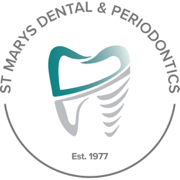Inlays & Onlays at St Marys Dental Surgery NSW
Dental inlays and onlays are restorative dental procedures used to repair and restore damaged or decayed teeth. They are often used when a tooth’s structure is compromised but not to the extent that a dental crown is necessary. Inlays and onlays are a more conservative option that preserves more of the natural tooth structure.
Here is a breakdown of what dental inlays and onlays are:
Dental Inlays:
An inlay is a type of dental restoration that is used to repair a tooth’s chewing surface, specifically within the cusps (raised points) of the tooth. Inlays are typically used when a tooth has moderate decay or damage that does not require the placement of a crown. They are custom-made in a dental laboratory using materials like porcelain, composite resin, or gold. The inlay is then bonded to the prepared tooth using dental adhesive, providing a strong and natural-looking repair.
Dental Onlays:
An onlay is a more extensive restoration that covers a larger portion of the tooth’s chewing surface and may also extend over one or more cusps. Onlays are used when a tooth has more extensive damage that extends beyond the cusps but still does not warrant a full dental crown. Like inlays, onlays are custom-made in a dental laboratory and are bonded to the tooth using adhesive.
Both inlays and onlays have several advantages:
- Preservation of Tooth Structure: Inlays and onlays allow for the preservation of more natural tooth structure compared to dental crowns, which require more extensive tooth reduction.
- Strength and Durability: Inlays and onlays are made from strong and durable materials, making them a long-lasting solution for restoring damaged teeth.
- Aesthetics: The materials used for inlays and onlays, especially porcelain and composite resin, can be matched to the natural colour of the teeth, providing a more aesthetically pleasing result.
- Customization: Inlays and onlays are custom-made to fit the specific shape and size of the prepared tooth, ensuring a precise and comfortable fit.
- Functionality: Inlays and onlays restore the tooth’s function and chewing ability, allowing patients to eat and speak comfortably.
The procedure for getting dental inlays and onlays typically involves two appointments. During the first appointment, the dentist prepares the damaged tooth, takes impressions, and places a temporary restoration. The impressions are sent to a dental laboratory where the custom inlay or onlay is fabricated. During the second appointment, the temporary restoration is removed, and the custom-made inlay or onlay is bonded to the tooth.
It is important to note that the choice between dental inlays, onlays, crowns, or other restorative options will depend on the extent of the tooth damage and the dentist’s clinical judgment. If you are considering dental inlays or onlays, it is best to consult with a qualified dentist to determine the most appropriate treatment for your specific case.

